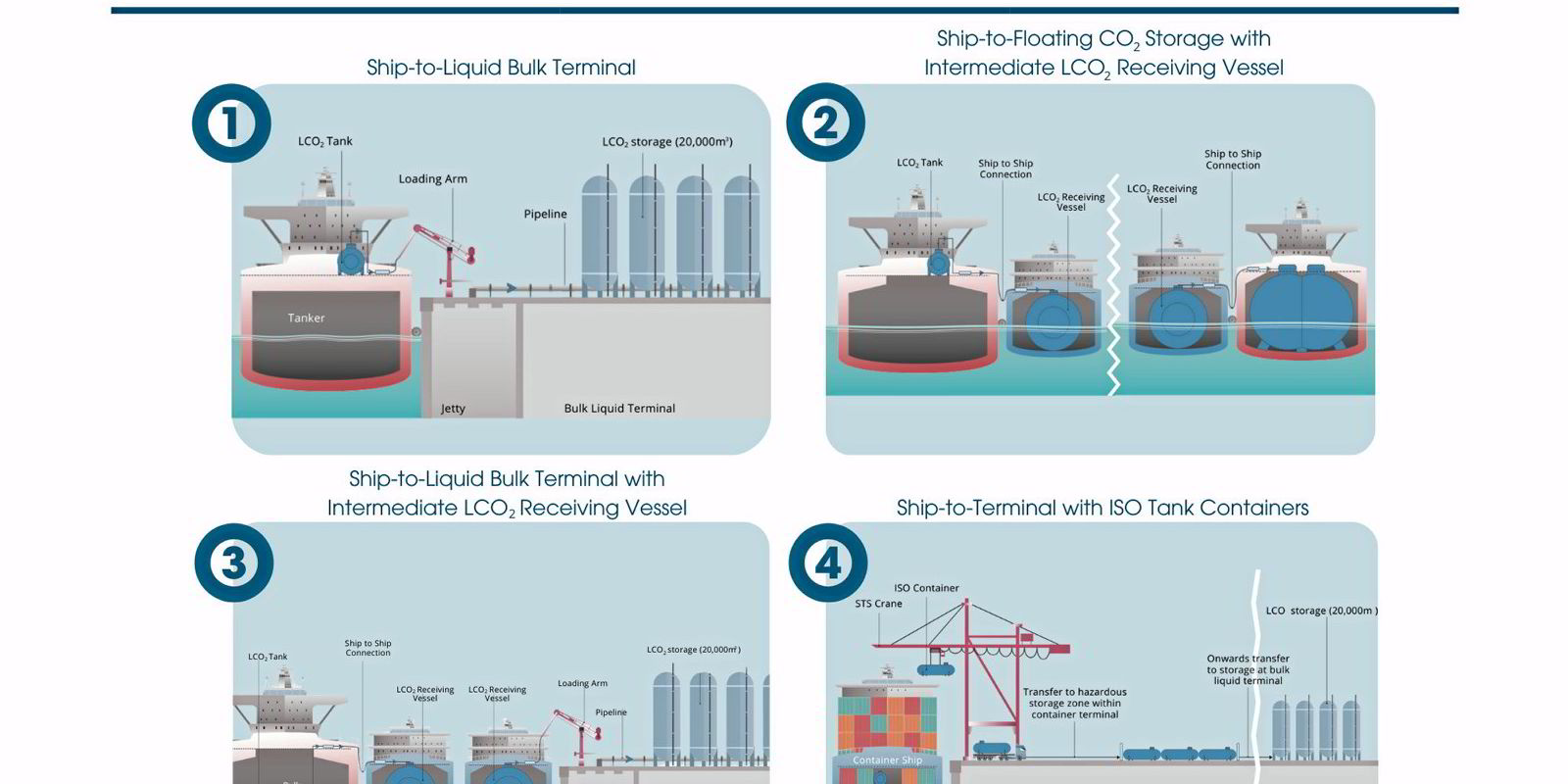A lack of port infrastructure will be a bottleneck if shipping is going to use onboard carbon capture technology in its decarbonisation journey.
Onboard carbon capture is a nascent idea in which existing diesel engines and hydrocarbon fuels are used, but their CO2 emissions are captured after combustion rather than allowed to enter the atmosphere.
A number of companies have been trialling solutions, with at least one, Value Maritime in the Netherlands, already offering a solution for small and midsize vessels.
However, a report from the Global Centre for Maritime Decarbonisation in Singapore says more thought needs to go into how the greenhouse gas will be removed from ships using the technology and then either sequestered or reused.
It found that a limited number of ports have the infrastructure to handle liquefied CO2. Industrial carbon capture is seen by a growing number of heavy shore-based heavy emitters as a key tool to their decarbonisation.
The report authors looked at some of these located near ports, and noted that many are still at the concept phase and have yet to go to final investment decision.
Transportation infrastructure has therefore not yet been built up, including port handling infrastructure.
The report says that any shipboard captured CO2 will probably need to be fed into a larger CO2 infrastructure network for the technology to be economically feasible.
It also notes that CO2 handling that is currently undertaken is for food grade CO2 and says there is limited operability between this grade of CO2 and that coming from ship exhausts.

The study was conducted with Lloyd’s Register and Arup, a UK-based environmental consultancy, and is being published in time for the latest environment talks at the International Maritime Organization.
It notes that captured CO2 in its liquid form is probably the most efficient, cost-effective state in which to store and transport CO2, so has proposed four concepts for offloading it from ships using onboard carbon capture and storage, including swapping ISO containers, and ship-to-ship and ship-to-shore transfers.
One safety concern over the use of CO2 raised in the report is the so-called triple point, the condition at which it can exist in all three states — gas, liquid and solid.
Minor changes in temperature or pressure can lead to solid CO2, sometimes known as dry ice, and blockages in pipework.
Professor Lynn Loo, chief executive of the GCMD, said the study highlights the safety and infrastructure build-up challenges that need to be addressed if onboard carbon capture is to be used.
“This study sheds light on these challenges, and highlights recommendations to holistically address these concerns for parties interested in advancing onboard carbon capture and storage, and liquid CO2 offloading concepts.”




